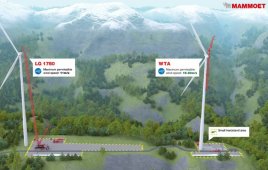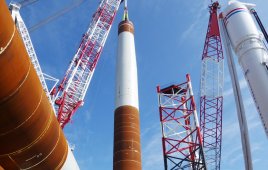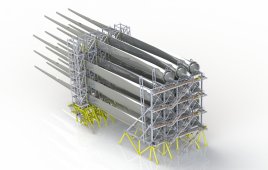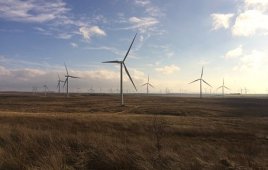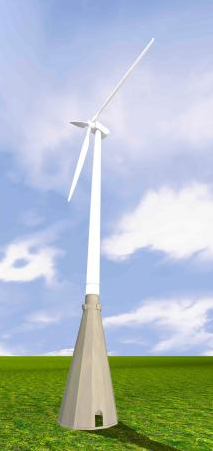
The design and construction of the Atlas CTB result in a hybrid wind tower with great performance, according to the manufacturer.
A manufacturer of precast components offers a new concrete tower base. Tindall Corp’s Atlas CTB is certified from Germanischer Lloyd, an important step in the company’s development of wind tower technology that will allow the industry to extend hub heights above 100 m to generate more power. “The GL Strength Design certification confirms our engineering concept and clears the way for the industry to install turbines above up to 140 m,” says Tindall Chairman, William Lowndes III.
This revolutionary new hybrid tower concept provides a practical and economical tower and foundation system that brings significant performance improvements to the wind power industry. Comprising the lower 31 m of a 110-m or higher tower, the Atlas CTB is ideal for larger wind turbines. This flared-base, precast concrete lower section accommodates a conventional steel monotower upper section. The large-footprint base (generally 15 m–18 m) is composed of multiple precast staves that are erected and stabilized by post-tensioning. A big payoff: the load-distributing, large-footprint base requires a simple ring foundation with a thickness of a meter or less.
Key elements to higher structural integrity include:
A large-footprint base situated on a simple ring foundation of 1 m thickness or less
A vertical and circumferential post-tensioning process that places the transition zone of the tower under bi-axial compression
The inherent harmonic and vibration dampening characteristics of concrete
Watch a video of the Atlas here
Tindall www.tindallcorp.com
Filed Under: Construction, Towers

